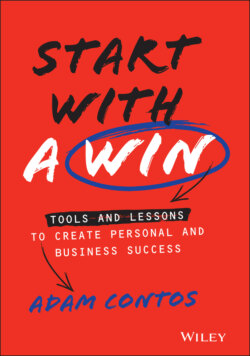Читать книгу Start With a Win - Adam Contos - Страница 33
EXPECT THE FEAR
ОглавлениеThe first time I addressed a large crowd—1,500 people—I was nervous and a little afraid. I understood suddenly why so many people are afraid of public speaking. Like many public speakers before they go on stage, I worried about a number of issues: whether people would listen to me, whether they would care about what I had to say, whether my message would be clear, whether I would embarrass myself, and all those other little and not-quite-so-little fears that can nag at each of us.
A mission. But I approached my speech as another mission, and that enabled me to separate it from my fear—the Beast. It's the same approach I used as a SWAT officer or on a sheriff's call. I had a script and I knew the mission; I had practiced the speech many times, and so I walked on stage confident that I could do the job right, and I did.
Nearly two decades and literally thousands of presentations later, I still get a little nervous. I consider it my quality-control awareness. But today, just as then, I know my material, practice my presentation over and over and over again, and address people I care about, so my words come across as genuine and caring. Admittedly though, my speeches are a little more comfortable and conversational now as opposed to those early speeches.
Everyone thinks there's a secret to public speaking, but there's not. Faced with presenting, follow the principles above for a win. Repeated practice is essential to familiarize yourself with the content. Too many people try to script too many things. But audiences don't want a scripted talk. They don't want you to read; they prefer a free-flowing conversation, which requires knowledge of the ideas so they can be shared easily, freely, and comfortably.
It's the same procedure for video presentations. Audiences want to hear and see confidence, a positive attitude, and kindness or caring.
Study and practice. I learned to improve my speech delivery by reading how great public speakers do it. I also watched videos of other amazing public speakers—not for the content or the delivery methodology, but for the tone, tempo, delivery, and how the speaker reads their audience. It's called public speaking and not public talking for a reason. You're communicating as if you're having a two-way conversation, only the feedback from the crowd is in their response, not their words.
Seek comment. Feedback from a presentation also allows us to continually learn and improve. Despite all the speeches I've made over the years, I still seek out and appreciate feedback after every speech or presentation. I have had speaking consultants critique my work and rip it apart. It hurts to hear your mistakes, but you listen, learn, and improve. I also review video or audio of my presentations. I don't like to watch myself present—I don't think anyone does—but I do it to see if there are ways I can improve for next time.
Reviewing the product of your work is important in whatever we do, whether it's a speech, a sale, a document, or a mission in your life. When my wife and I leave the gym in the morning, we even discuss our workouts and how to make them better—or we celebrate our victories.
If we ignore pursuing excellence in one thing, we ignore it in everything. That goes for shooting a two-minute video on social media all the way to standing in front of 10,000 people to deliver a speech.
